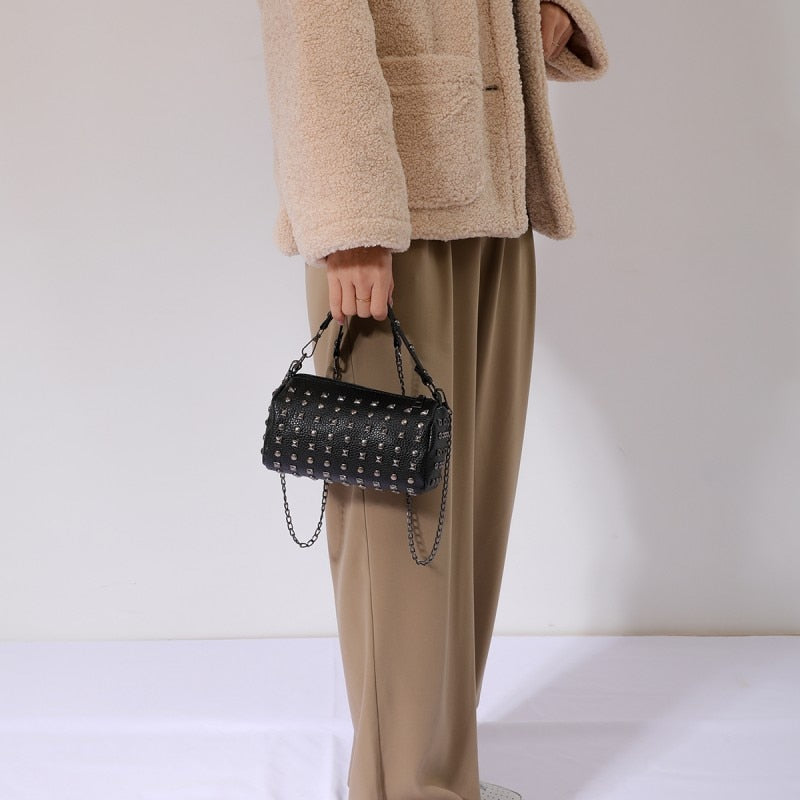
Abstract:
This scientific article aims to investigate the use, functionality, and ergonomic aspects of crossbody goth purses, which have gained popularity among the gothic subculture. These bags serve as more than just a fashion accessory; they reflect personal style while catering to practical needs. Ergonomic analysis is carried out to evaluate the impact of these purses on posture, comfort, and overall well-being. Through this research, we aim to provide insights and recommendations for the design and usage of crossbody goth purses that ensure both style and sustainability align with human ergonomics.
1. Introduction:
The gothic subculture encompasses unique fashion trends that combine dark elements with self-expression. Among goths, crossbody goth purses have garnered attention due to their distinctive design, functional utility, and ability to complement alternative aesthetics. This article aims to understand the complexities surrounding these purses while examining the implications for users' postures, comfort, and overall well-being.
2. Historical Evolution of Crossbody Purses:
A historical overview of crossbody purses within the gothic subculture can be traced back to Victorian fashion influences. The evolution and adaptation of these purses over time are explored, highlighting the shift towards customized designs that cater specifically to the goth community.
3. Functional Analysis:
This section assesses the practical functionalities of crossbody goth purses. It delves into the bag's storage capacity, accessibility, security features (e.g., zippers, closures), and organization, all of which play a vital role in impacting users' everyday experiences and satisfaction. Additionally, the integration of additional features such as detachable straps, multiple compartments, and hidden pockets are explored to enhance usability.
4. Ergonomic Evaluation:
The ergonomic evaluation focuses on the impact of crossbody goth purses on users' postures, comfort, and overall well-being. Various factors, including strap length, adjustability, material selection, and weight distribution, are analyzed to determine the ergonomic suitability of these purses. The article also considers potential ergonomic issues, such as strain on the neck, shoulders, and back caused by heavy or improperly designed purses.
5. User Satisfaction and Personal Experience:
In this section, we present real-life experiences and feedback obtained from goth purse users. Through surveys and interviews, we explore their perspectives on functionality, aesthetics, comfort, and recommendations for improvement. This qualitative data provides valuable insights into the user's satisfaction and helps identify areas for customization and enhancement in future designs.
6. Recommendations for Design Improvement:
Based on the findings from the ergonomic evaluation and user feedback, this section offers recommendations for improving the design and functionality of crossbody goth purses. Emphasizing the importance of lightweight materials, adjustable straps, and efficient weight distribution, these recommendations aim to strike a balance between style and user comfort.
7. Sustainable and Ethical Considerations:
Given the growing concern for sustainability, this section discusses the ecological impacts associated with the production and disposal of crossbody goth purses. The potential use of eco-friendly and cruelty-free materials in their construction is explored, shedding light on the importance of designing and sourcing these purses with sustainability in mind.
8. Conclusion:
This scientific article sheds light on the use and ergonomics of crossbody goth purses, providing comprehensive insights into their design, functionality, and impact on user well-being. By evaluating the ergonomic implications and incorporating user feedback, this study emphasizes the need for goth purse designs that prioritize both style and ergonomics. It is hoped that the recommendations presented will pave the way for improved designs, contributing to a more sustainable and user-centric goth fashion industry.